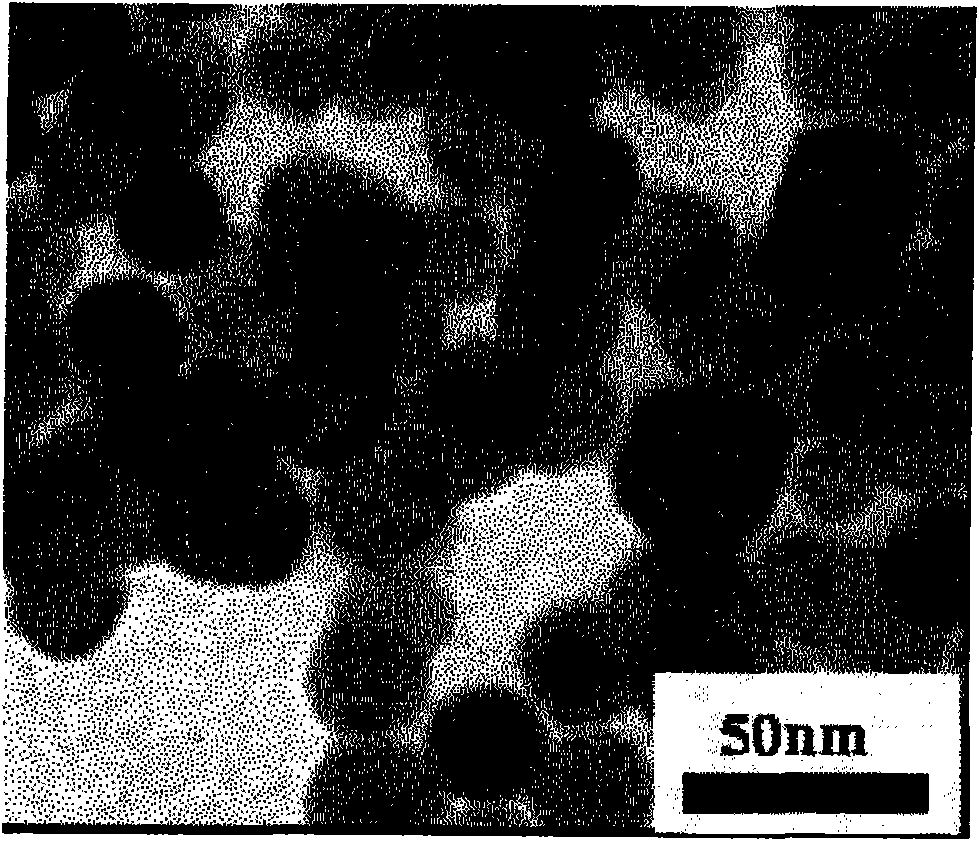Method for producing oxide crystal fine particle
A manufacturing method and oxide technology, applied in the preparation of oxide/hydroxide, chemical instruments and methods, zirconia, etc., can solve the problems of stress change, scratches, uneven particle size, etc., and achieve small and uniform particle size. Highly excellent in properties and the effect of suppressing the occurrence of scratches
- Summary
- Abstract
- Description
- Claims
- Application Information
AI Technical Summary
Problems solved by technology
Method used
Image
Examples
Embodiment
[0094] Hereinafter, although an Example demonstrates this invention, this invention is not limited to these Examples.
[0095] [evaluate]
[0096] (1) Evaluation of pulverized matter
[0097] Volume-based particle size distribution: Measured using a laser diffraction-type wet particle size distribution analyzer (manufactured by HORIBA, model: LA-920).
[0098] (2) Evaluation of particles
[0099] Crystallite diameter: Calculated from the width of the diffraction line measured by an X-ray diffractometer (manufactured by Rigaku Corporation, model: RINT2500) according to Scherrer's formula.
[0100] Average primary particle diameter: Calculated by performing spherical approximation from the specific surface area by measuring the specific surface area (manufactured by Shimadzu Corporation, model: ASAP2020) by the nitrogen adsorption method (BET method).
[0101] Coefficient of variation of particle diameter: Using a photograph taken by a transmission electron microscope (manufa...
example 1
[0105] According to CeO 2 , BaO and B 2 o 3 The mol% of the basis represents the amounts of 33.4%, 13.3% and 53.3% respectively. Weighing cerium oxide (CeO 2 ), barium carbonate (BaCO 3 ) and boron oxide (B 2 o 3 ), was sufficiently wet-mixed with an automatic mortar using a small amount of ethanol, and then dried to prepare a raw material mixture.
[0106] The obtained raw material mixture was filled in a platinum container (containing 10% by mass of rhodium) with a nozzle for dripping the melt, and heated at 1500° C. for 2 hours in an electric furnace using molybdenum silicide as a heating element to completely Melting (melting process). Next, the nozzle portion was heated, and the melt was dripped onto a double roll made of SUS316 (roll diameter: 150 mm, roll speed: 300 rpm, roll surface temperature: 30° C.) installed under the electric furnace to obtain a flake-shaped solid ( quenching process). The obtained flaky solid was transparent, and it was confirmed as an a...
example 2
[0114] CeO was obtained in the same manner as in Example 1, except that the time for heating the pulverized product was set to 32 hours. 2 crystal particles. The crystallite diameter of the obtained microparticles was 22 nm, the average primary particle diameter was 26 nm, the crystallite diameter:average primary particle diameter=1:1.2, and the variation coefficient of the particle diameter was 0.22.
PUM
| Property | Measurement | Unit |
|---|---|---|
| particle size | aaaaa | aaaaa |
| particle size | aaaaa | aaaaa |
| particle size | aaaaa | aaaaa |
Abstract
Description
Claims
Application Information
 Login to View More
Login to View More - R&D
- Intellectual Property
- Life Sciences
- Materials
- Tech Scout
- Unparalleled Data Quality
- Higher Quality Content
- 60% Fewer Hallucinations
Browse by: Latest US Patents, China's latest patents, Technical Efficacy Thesaurus, Application Domain, Technology Topic, Popular Technical Reports.
© 2025 PatSnap. All rights reserved.Legal|Privacy policy|Modern Slavery Act Transparency Statement|Sitemap|About US| Contact US: help@patsnap.com


